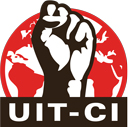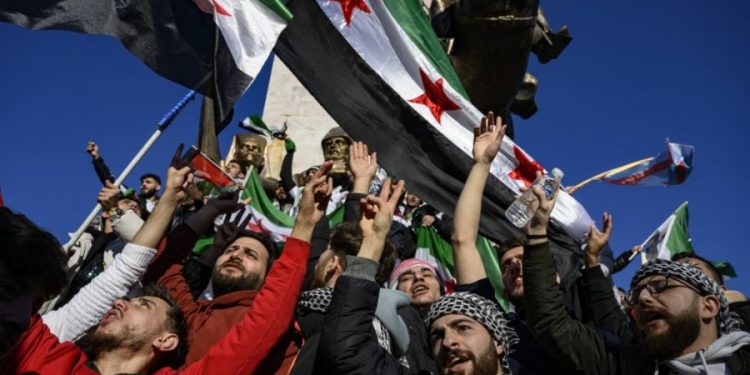By Miguel Sorans, a leader of the Socialist Left and the IWU-FI 11 December 2024
The fall of the dictatorship of Bashar al Assad is a thirteen-year overdue triumph of the popular revolution that began in March 2011. Syria was part of the revolutions in North Africa and the Middle East that began in January 2011 in Tunisia. They were called the Arab Spring. In Syria winter is beginning, so we can say that the ‘Syrian spring’ came in winter.
The dictatorship fell at an unforeseen speed
No one could have predicted the outcome; it truly came as a surprise to everyone involved. Especially the dictator himself, Russia and Iran, his bloody allies, US imperialism, and the genocidal Zionism of Israel. in parentheses, it is appropriate to clarify that the Islamic rebel groups have had no support nor were they encouraged by the US and Israel, as rumours of Al Assad’s defenders have spread. Donald Trump called not to ‘get involved’: ‘Syria is a mess, but it’s not our friend, and the United States should have nothing to do with it. This is not our fight (…) Let’s not get involved’ (La Nacion, Argentina, 7 December 2024). Biden ordered 75 bombing raids on an area in the name of attacking the Islamic State. Israel celebrated Bashar’s fall but expanded its Golan Heights occupation. So much so that even the UN called on them to stop.
It was Hamas, the Palestinian resistance leadership, that hailed the fall of the dictatorship in a communique. Palestinian group Hamas congratulated the Syrian people on Monday for achieving their “aspirations for freedom and justice” after toppling President Bashar al-Assad. (https://www.reuters.com/world/middle-east/hamas-congratulates-syrians-ending-assads-rule-2024-12-09/ )Rebels were releasing over 600 Palestinian prisoners from regime jails.
Several elements combined to bring about his fall in 12 days. Among them were the weakness of Russia, focused on the war in Ukraine, and Iran-Hezbollah, battered in Lebanon. But the central element was that Bashar’s regime was a ‘paper tiger’, sustained only by Iranian military support and Russian aviation. It had almost no social base and was hated by millions of the Syrian people who were waiting for the moment to topple it. And that moment came with the fall of Aleppo on 30 November. No one was willing to ‘lay down their lives’ for Bashar. The Syrian army itself crumbled at the first rebel actions. There was some bombing by Russian aircraft in the first days of the rebellion. However, the resources, while helpful, proved insufficient to meet the needs of the situation.
There are those who, minimising the strength of the popular rebellion, point out that everything was agreed on 7 December, between Turkey, Russia, and Iran, at a meeting of foreign ministers planned beforehand at the Doha Forum in Qatar’s capital, Doha. Yes, it seems they made a deal, but when they were already defeated. They agreed on how best to surrender, guaranteeing the departure to Moscow of Bashar and his family, seeking to avoid further destabilisations from the country. But it was an improvisation amid the turmoil, the overflow of the Syrian people’s rebellion, the defeat of their forces and the imminent fall of the regime.
The fall of Aleppo opened up a new situation. It triggered the resumption of the mobilisation of thousands and thousands of fighters and former fighters from the first years of the popular rebellion that began in 2011. As the rebels advanced, other cities rose up. Such was the case in the villages of Daraa, southern province, which was the cradle of the 2011 revolution. These fighters and fighters had no connection with the HTS brigade in the north. They stormed police stations and then barracks with weapons in hand.
We should remember that Bashar’s sending of tanks and the army to massacre the mobilizations turned the popular 2011 rebellion into a civil war. The people were forced to take up arms to defend themselves and continue the struggle. And when in 2014 the dictator was lost, he was saved by the criminal entry of Russian aviation, which has a base in the port of Tartous. In 2017, the revolution was defeated. Although the victory was significant, it was not a complete triumph. Bashar had to concede that Idlib province, in the north-east of Syria, would remain in the hands of the rebels who were gathering there. More than 2 million people live in Idlib. The various rebel groups have been preparing there for years and even have weapons factories there. This combination of forces and the fragility of the regime explain the speed of the dictatorship’s fall.
Where is Syria heading? Doubts about HTS
Syria gets into a new situation. The million-dollar question is what will happen next. HTS command the new provisional government (Hayat Tahrir al Sham – Organisation for the Liberation of Syria). It is a bourgeois nationalist-Islamic coalition that brings together different factions, from religious to liberal. There is a relationship with Turkey, although Erdoğan is said not to have full political and military control. It is a conservative alliance that has ruled Idlib province since 2017 and has managed public services, education, health, justice, infrastructure and finance. The prime minister-designate, Mohammed al-Bashir, was a minister in that government.
Abu Mohammed al-Jolani, leader of HTS, broke with al-Qaeda and ISIS years ago and presents himself as a ‘moderate’. In his first statements, he said that ‘Syria is for everyone… for Druze, Sunni, Alawi, Christian, and all religions’. He made a surprising declaration: “It is strictly forbidden to interfere with women’s dress or impose any demands related to their clothing or appearance.” It remains to be seen how much of this will be real or just double-speak.
As the IWU-FI statement says: ‘As revolutionary socialists, who always support the revolution together with the Syrian left, we do not lend support to this leadership and do not arouse any political confidence. The basic solution remains to continue the struggle for a socialist Syria under a government of the workers and the popular sectors.
Building an independent Syrian left leadership
The Syrian people are entering a new phase of the struggle for their real political and social liberation, for full democratic freedoms, for the return of millions of refugees and for the social demands of the working people that have been postponed. And for this fundamental struggle, a new revolutionary socialist leadership needs to be built.
The experience of the revolutions of 2011 showed that the revolutions triumphed on the democratic level, by getting rid of dictatorships of more than 30 years of existence. But for lack of revolutionary leadership, these processes stagnated, as in Tunisia, or regressed, as in Egypt and Libya. New capitalist governments of different signs emerged, which kept the capitalist economic structure tied to the various imperialisms, which maintain the misery and social decay of the peoples. In Syria, to overcome this deficit, it is necessary to build a new leadership relying on the sectors of the Syrian left that within the country and from exile continued the struggle against Bashar Al Assad from an independent and socialist perspective.













